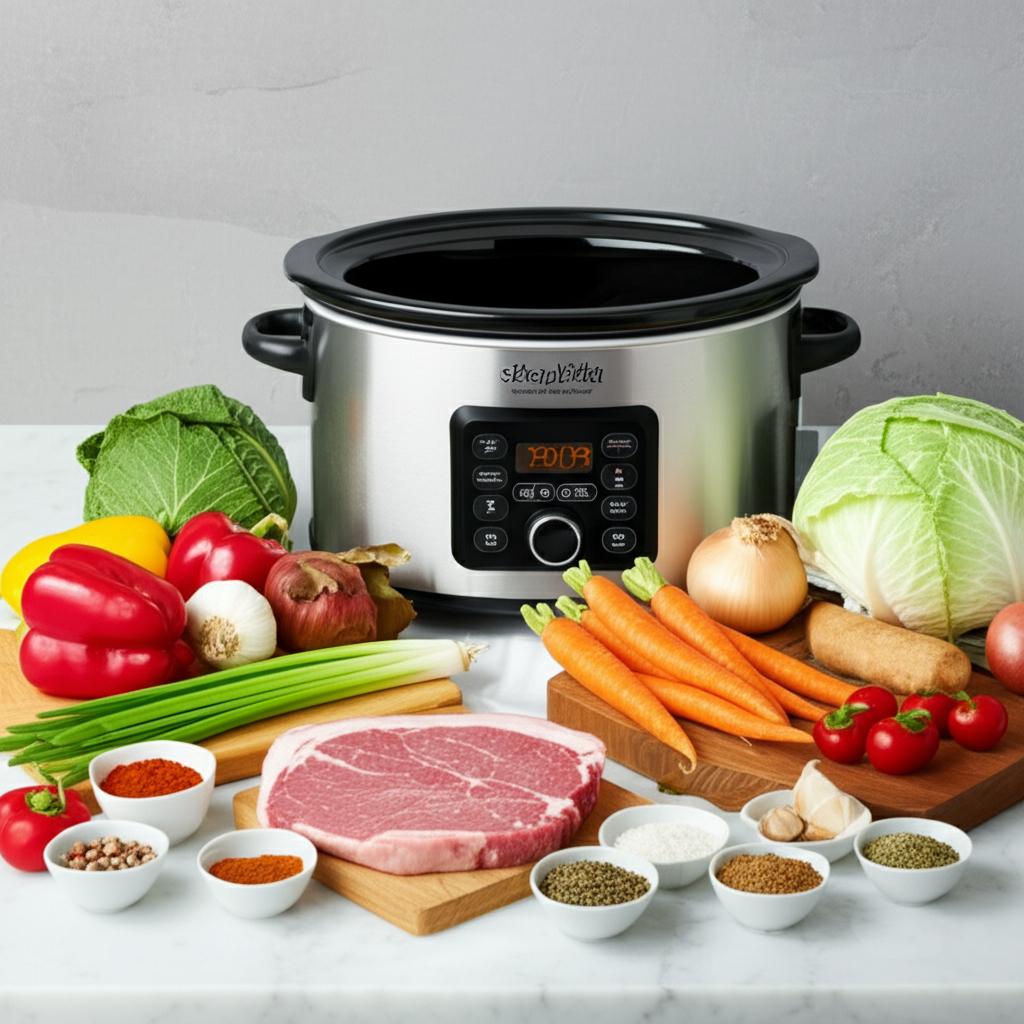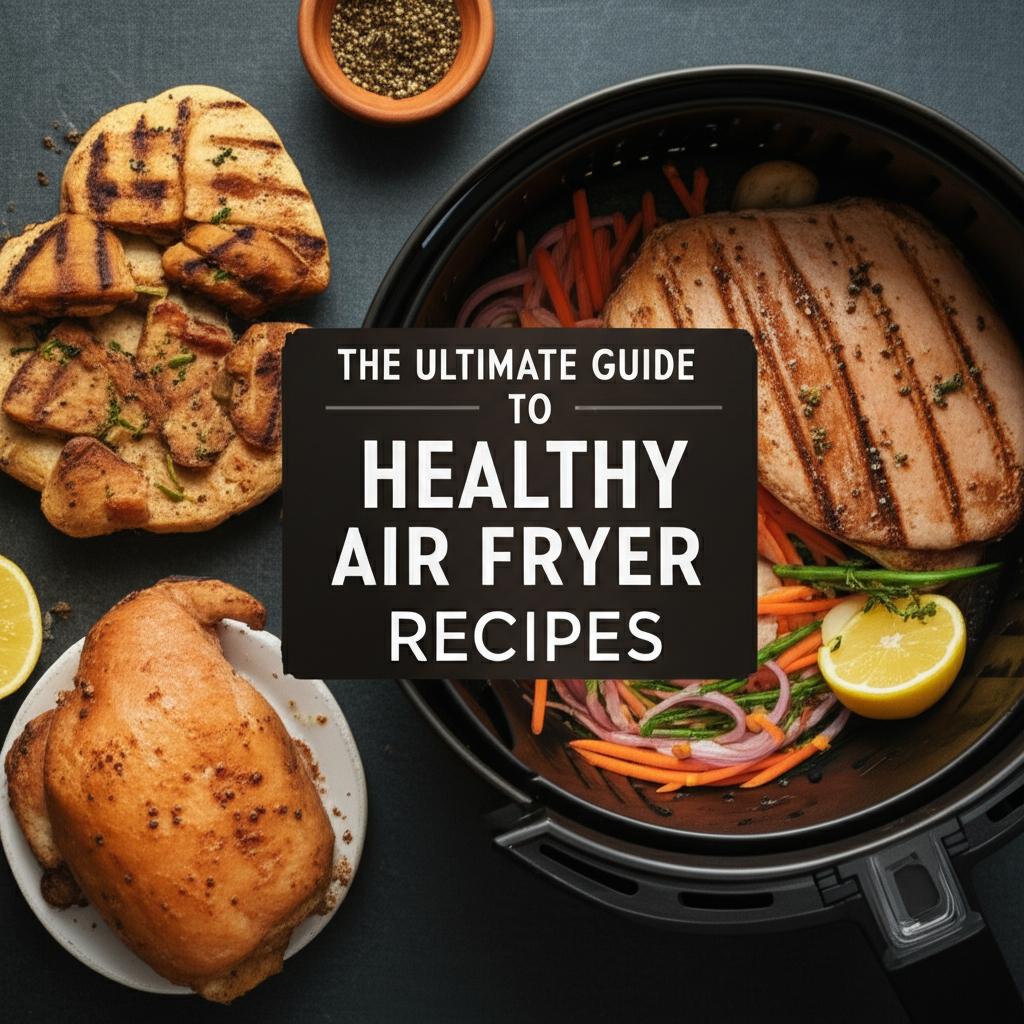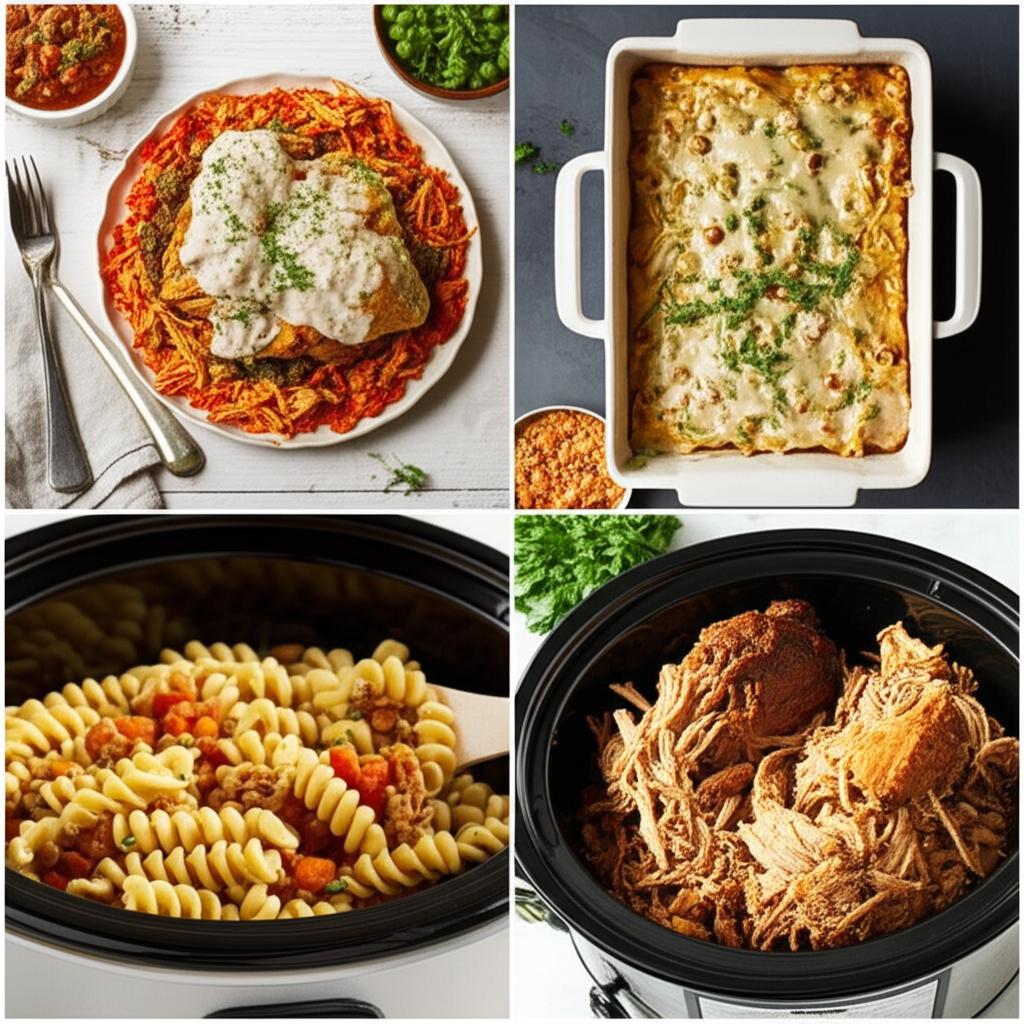
Pressure Cooker Perfection: Unlock Fast & Flavorful Meals Every Time!
- Instant Pot Duo Plus 9-in-1 Multicooker, Pressure Cooker, Slow Cook, Rice Maker, Steamer, Sauté, Yogurt, Warmer & Sterilizer, Includes App With Over 800 Recipes, Stainless Steel, 6 Quarts
- Instant Pot Duo 7-in-1 Mini Electric Pressure Cooker, Slow Rice Cooker, Steamer, Sauté, Yogurt Maker, Warmer & Sterilizer, Includes Free App with over 1900 Recipes, Stainless Steel, 3 Quart
- 09915 Pressure Cooker Overpressure Plug (6 Pack) Replacement for fits for Presto,Pressure Cooker accessories
Do you dream of delicious, home-cooked meals but often find yourself short on time? Imagine a world where tough cuts of meat become fork-tender in minutes, dried beans cook without hours of soaking, and hearty stews are ready before you even think about ordering takeout. This isn’t a fantasy – it’s the magic of the pressure cooker!
Often misunderstood, the pressure cooker is a culinary superhero designed to revolutionize your kitchen. It’s safe, efficient, and incredibly versatile, transforming the way you approach meal preparation. Let’s dive into the world of pressure cooking and discover how to achieve perfection on your plate, faster than ever before.
What Exactly Is a Pressure Cooker?
At its heart, a pressure cooker is a specialized pot with a tightly sealing lid that traps steam generated from the liquid inside. As steam builds, it creates high pressure, which in turn elevates the boiling point of water far beyond 212°F (100°C). This superheated, pressurized environment cooks food significantly faster than conventional methods. Think of it as giving your ingredients a high-speed, high-temperature spa treatment!
Why Should You Embrace Pressure Cooking?
Beyond just speed, pressure cooking offers a host of benefits that make it an invaluable kitchen tool:
- Incredible Speed: This is the most obvious advantage. Cooking times are drastically reduced – we’re talking minutes instead of hours for many dishes.
- Enhanced Flavor: The sealed environment infuses flavors deeply into your food. Aromatics and liquids are unable to escape, creating richer, more concentrated tastes.
- Nutrient Retention: Shorter cooking times and less liquid mean more vitamins and minerals are preserved, making your meals not just fast but also healthier.
- Energy Efficiency: Because food cooks so quickly, you use less energy compared to conventional stovetop or oven methods.
- Less Mess: Everything cooks in one pot, minimizing cleanup.
- Tender Results: The high-pressure environment works wonders on tougher cuts of meat and fibrous vegetables, making them incredibly tender and succulent.
Getting Started: Safety First!
Modern pressure cookers are designed with multiple safety features, making them much safer than the models of yesteryear. However, understanding their operation is crucial. Always read your appliance’s instruction manual before first use.
Key Safety Principles:
- Never overfill: Leave enough headspace for steam to build. Most cookers have a “MAX FILL” line.
- Ensure the lid is properly sealed: A misaligned lid won’t build pressure and could be dangerous.
- Keep vent clear: Make sure the pressure release valve and vents are free of food particles.
- Never force anything open: Wait for pressure to release completely before attempting to open the lid.
- Use caution with steam: Steam is extremely hot. When releasing pressure, keep hands and face away from the vent.
Step-by-Step Guide to Pressure Cooker Perfection
Ready to cook? Follow these simple steps for a seamless pressure cooking experience:
- Prepare Your Ingredients: Just like any recipe, chop vegetables, trim meat, and measure liquids. Some recipes suggest browning meat or sautéing aromatics in the pressure cooker itself before sealing the lid for added flavor.
- Add Liquid: This is crucial! A pressure cooker needs liquid to create steam and build pressure. Most recipes require at least 1 cup (250ml) of liquid, but check your specific recipe and cooker’s recommendations. Water, broth, wine, or even sauce can count as liquid.
- Load Your Cooker: Place all prepared ingredients and the required liquid into the inner pot. Do not overfill! Most models recommend filling no more than 2/3 full for most foods, and only 1/2 full for foods that expand (like rice, beans, or grains).
- Secure the Lid: Place the lid on the cooker and lock it securely according to your model’s instructions. Ensure the gasket (sealing ring) is properly seated and clean, as this is vital for creating the pressure seal.
- Set the Vent: Check that the pressure release valve (or jiggle top) is in the “Sealing” or “Closed” position. If it’s a manual vent, close it.
- Begin Heating: Place the pressure cooker on your stovetop over high heat (or select your pressure cooking program on an electric model). You’ll hear a gentle hissing as steam starts to build, and soon, the pressure indicator will rise or pop up, signifying that full pressure has been reached.
- Start Cooking Time: Once full pressure is achieved, reduce the heat to maintain a steady, gentle hiss (or the electric cooker will automatically maintain pressure). Begin timing your recipe from this point. Do not reduce heat too much, or the cooker will lose pressure.
-
Release Pressure: Once the cooking time is complete, it’s time to release the pressure. There are generally two main methods:
- Natural Release (NPR): Simply turn off the heat and let the pressure dissipate naturally. This can take 10-25 minutes or longer depending on the volume of food. The pressure indicator will drop on its own. This method is best for foamy foods (like soups or grains) and meats, as it allows for a gentler cooking process and helps prevent food from breaking apart.
- Quick Release (QPR): Carefully open the steam release valve (or press the quick release button) to allow steam to escape rapidly. Be mindful of the hot steam! This method is best for delicate foods (like vegetables) to prevent overcooking and for stopping the cooking process immediately.
- Combination Release: Some recipes call for a brief natural release (e.g., 5-10 minutes) followed by a quick release.
-
Open and Serve: Once the pressure indicator has fully dropped and no more steam is escaping, it’s safe to open the lid. Always open the lid away from your face to avoid any residual steam. Stir, season, and enjoy your delicious, fast meal!
Tips for Pressure Cooker Perfection
- Liquid is Key: Always ensure you have enough liquid. Too little can burn your food and damage the cooker; too much can make your food mushy.
- Cut Food Evenly: For consistent cooking, try to cut your ingredients into similar-sized pieces.
- Browning Adds Flavor: Don’t skip browning meats or sautéing aromatics (on the sauté setting of an electric cooker, or in the pot on the stovetop) before pressure cooking. This adds incredible depth of flavor.
- Altitude Adjustments: If you live at high altitudes, you may need to increase cooking times slightly. Consult your cooker’s manual or a reliable pressure cooker recipe resource.
- Don’t Fear Frozen: Many pressure cookers can handle cooking food from frozen, though cooking times will be longer.
- Cleanliness Matters: Always keep your sealing ring and pressure release valve clean. Food particles can prevent a proper seal or block the vent.
- Consider a Second Sealing Ring: If you cook both savory and sweet dishes, having a separate sealing ring for each can prevent flavor transfer.
Common Mistakes to Avoid
Even seasoned cooks make mistakes. Here are some common pressure cooker blunders and how to avoid them:
- Not Enough Liquid: This is a big one! The cooker needs liquid to build pressure. Always ensure the minimum liquid requirement (usually 1 cup) is met.
- Overfilling the Pot: Never fill past the recommended fill lines. This is a safety hazard and can prevent the cooker from reaching pressure or cause food to clog the vent.
- Forgetting to Close the Vent: If your pressure release valve is open, the cooker will never come to pressure, and you’ll just boil your food. Always double-check it’s in the “Sealing” position.
- Not Checking the Sealing Ring: A dry, cracked, or improperly seated sealing ring will prevent your cooker from sealing. Make sure it’s moist and in place.
- Opening Too Soon: NEVER force the lid open if there’s still pressure inside. Wait for the pressure indicator to drop completely. Forcing it open can be dangerous.
- Overcooking Delicate Foods: While pressure cooking is fast, it’s also powerful. Delicate vegetables can turn to mush if cooked too long. Err on the side of undercooking slightly and perform a quick release.
- Ignoring the Gasket (Sealing Ring) Maintenance: Over time, gaskets can wear out. If your cooker isn’t sealing properly, check the gasket for damage or consider replacing it.
Delicious Ideas for Your Pressure Cooker
The possibilities are endless! Here are just a few ideas to get you started:
- Soups & Stews: Hearty beef stew, lentil soup, chicken noodle soup – ready in a fraction of the time.
- Beans & Grains: Dried chickpeas, black beans, brown rice, quinoa – no soaking required for beans, and perfectly cooked grains every time.
- Tough Cuts of Meat: Pot roast, pulled pork, short ribs, whole chickens – incredibly tender and juicy in minutes.
- Vegetables: Steamed broccoli, corn on the cob, potatoes – quick and retain their vibrant color and nutrients.
- Cheesecakes & Desserts: Believe it or not, some pressure cookers are fantastic for moist cheesecakes and other steamed desserts!
Embrace the Pressure!
The pressure cooker is more than just a kitchen gadget; it’s an invitation to a world of faster, healthier, and more flavorful meals. With a little practice and attention to these guidelines, you’ll soon be creating culinary masterpieces with ease. So, take the leap, embrace the pressure, and unlock the perfection of fast and flavorful cooking in your own kitchen!
- Instant Pot Duo Plus 9-in-1 Multicooker, Pressure Cooker, Slow Cook, Rice Maker, Steamer, Sauté, Yogurt, Warmer & Sterilizer, Includes App With Over 800 Recipes, Stainless Steel, 6 Quarts
- Instant Pot Duo 7-in-1 Mini Electric Pressure Cooker, Slow Rice Cooker, Steamer, Sauté, Yogurt Maker, Warmer & Sterilizer, Includes Free App with over 1900 Recipes, Stainless Steel, 3 Quart
- 09915 Pressure Cooker Overpressure Plug (6 Pack) Replacement for fits for Presto,Pressure Cooker accessories
FAQ
Q. How safe are modern pressure cookers, especially compared to older models?
A. Modern pressure cookers are incredibly safe, a stark contrast to the models of yesteryear that sometimes sparked apprehension. Today’s units are equipped with multiple redundant safety features, including lid-locking mechanisms, pressure release valves, and vent covers that prevent over-pressurization. They are designed to be virtually foolproof when used correctly, making them a safe and reliable kitchen appliance for fast and flavorful cooking.
Q. How much quicker can I cook meals using a pressure cooker?
A. Pressure cooking dramatically reduces cooking times, often by 70% or more compared to traditional methods. For example, dried beans can cook in 15-20 minutes instead of hours, and tough cuts of meat that might simmer for 2-3 hours on the stovetop can become fork-tender in under an hour. This efficiency is due to the higher cooking temperatures achieved under pressure, which speeds up the cooking process significantly.
Q. Does pressure cooking diminish the flavor or nutritional value of food?
A. Quite the opposite! Pressure cooking actually enhances flavors and often preserves more nutrients. Because food cooks quickly in a sealed environment with minimal liquid, vital nutrients and delicate flavors are locked in rather than evaporating or leaching out into cooking water. This results in more intensely flavored, aromatic, and nutritious meals, as the ingredients’ natural essences are concentrated.
Q. What kinds of meals can I really make in a pressure cooker beyond just soups and stews?
A. The versatility of a pressure cooker extends far beyond just soups and stews. You can prepare an astonishing array of dishes, including tender whole chickens, succulent pot roasts, perfectly cooked grains like rice and quinoa, creamy risottos without constant stirring, hard-boiled eggs that peel easily, and even decadent desserts like cheesecakes and custards. It’s a true multi-tasker that can handle almost any meal.
Q. Is a pressure cooker difficult to clean and maintain?
A. Modern pressure cookers are surprisingly easy to clean and maintain. Most models feature non-stick interiors and removable parts like sealing rings and steam valves that can be easily washed by hand or in the dishwasher. Regular cleaning of the sealing ring and vent ensures optimal performance and longevity, but the overall maintenance required is minimal, making cleanup after a fast meal just as quick.
Q. I’m new to pressure cooking; is it difficult to learn and master?
A. While it might seem intimidating at first, pressure cooking is quite easy to learn, especially with modern electric models that often have pre-set programs. The learning curve is gentle, and many resources are available, including recipe books and online communities, to guide you. Start with simple recipes to build confidence, and you’ll quickly master the basics of pressure, time, and liquid, unlocking a world of fast and flavorful meals.
Q. My pressure cooker isn’t coming to pressure, what could be the problem?
A. The most common reasons a pressure cooker fails to reach pressure include an improperly sealed lid, a worn or damaged sealing ring (gasket), insufficient liquid, or a clogged steam vent. Ensure the lid is correctly aligned and locked, check the sealing ring for any cracks or debris, verify you’ve added the minimum required liquid for your recipe, and inspect the steam vent for blockages. Addressing these common issues usually resolves the problem.


